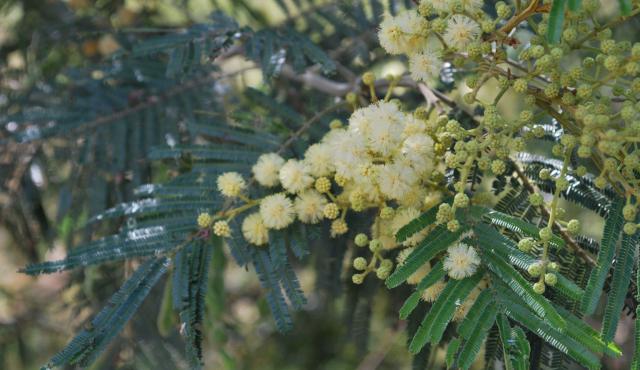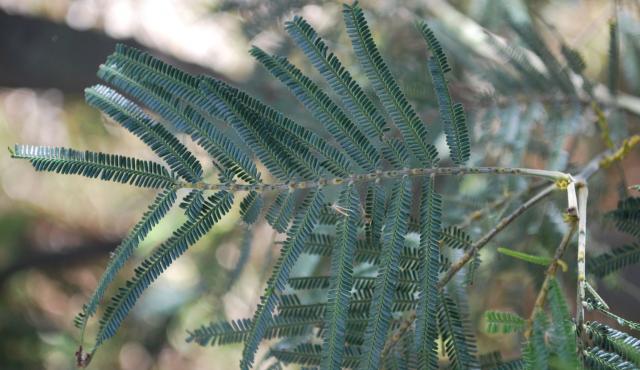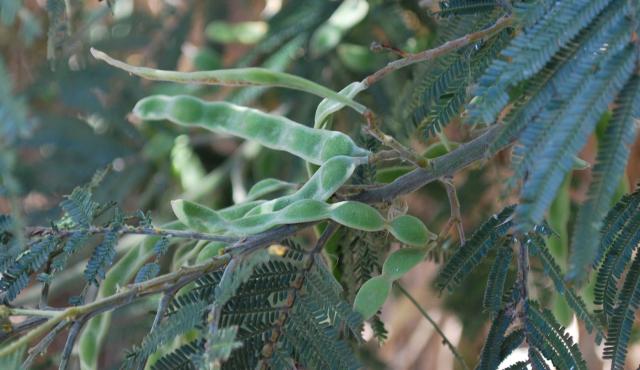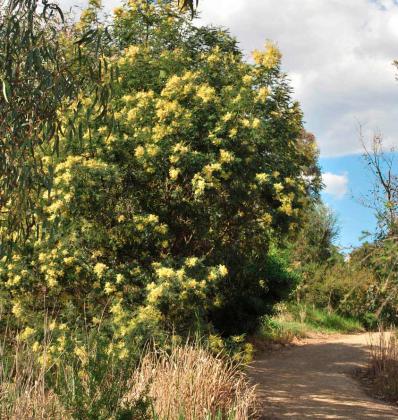



Black Wattle
Acacia mearnsii
Small to medium dark green tree 6-15 m. A fast growing, open-spreading tree with smooth bark that often exudes sap. Pale primrose yellow strongly-scented ball-shaped flowers made up of tiny individuals with long yellow stamens (the part of the plant that bears the pollen). Dark green feathery leaves made up of 9-20 pairs of leaflets. Smooth, dark bark.
| Details | |
|---|---|
| Flora Type | Trees |
| Distinctive Features | Numerous irregularly spaced hairy glands along the softly velvet stems. Seedpod constricted between seeds. |
| Biology | Perennial. Adapted to fire and mechanical disturbances which aid germination of the hard-coated soils. Slightly salt tolerant. Nitrogen-fixing and therefore useful for remediation of degraded sites. Attracts pollen feeding birds. Seeds are distributed by rodents and birds. |
| Native Status | Native |
| Flowering Time | Nov-Jan |
| Taxonomy | |
|---|---|
| Phylum | Tracheophyta (Vascular Plants) |
| Class | Magnoliopsida (Flowering Plants) |
| Order | Fabales |
| Family | Fabaceae |
| Genus | Acacia |
| Species | mearnsii |
Used for making weapons by Aboriginal people. Bark was used by the Aboriginal people for making string and a containers. Gum was used as food and medicine, along with ash and bark. The rare Tasmanian Hair Streak Butterfly Pseudalmenus chlorinda myrsilus lays its eggs in the cracks of the bark.
| Interesting Facts | |
|---|---|
| Similar Species | Distinguished from Silver Wattle A. dealbata by irregular glands along central vein of leaves, and by later flowering time. |
| Native Status | Native |